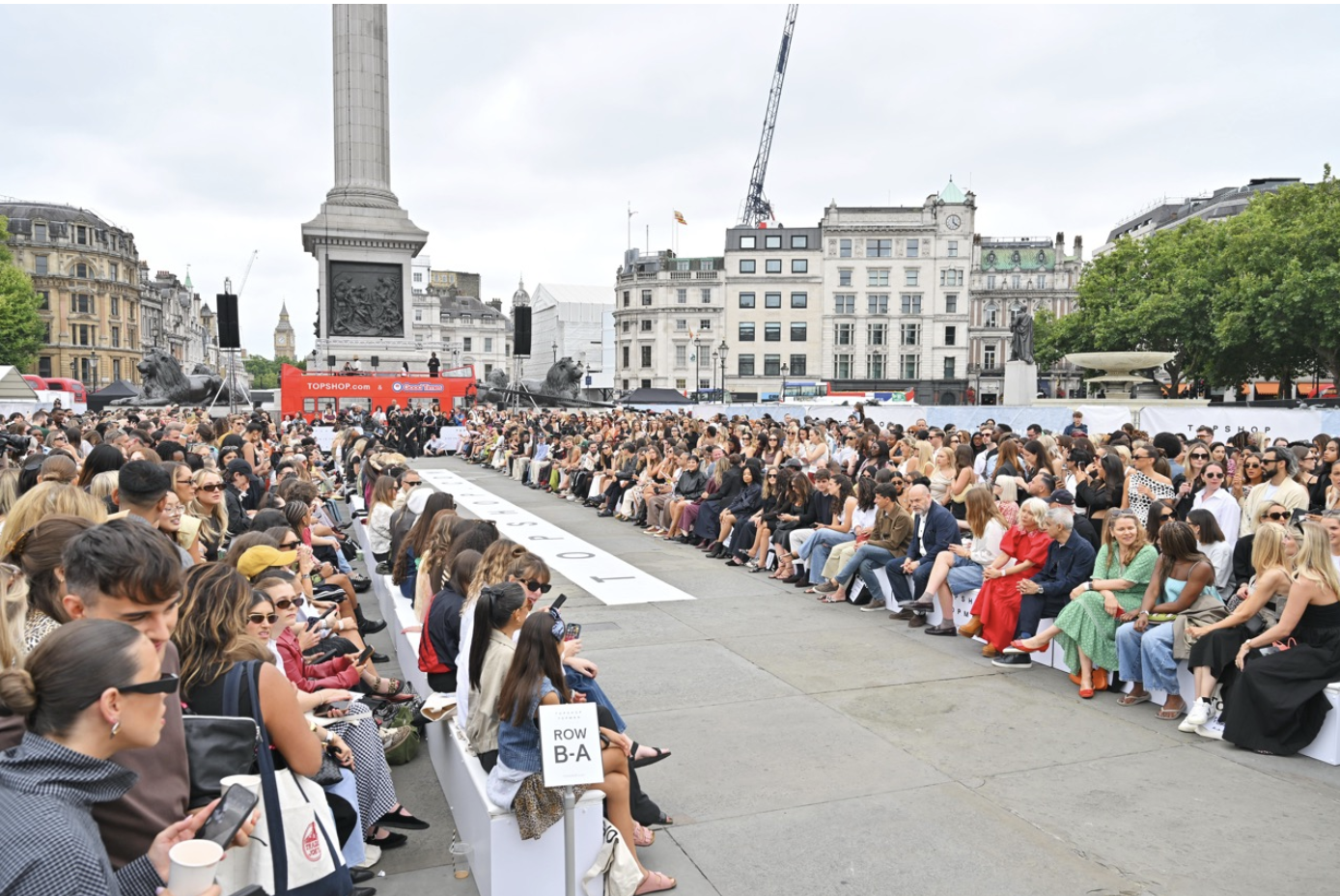When Topshop staged a catwalk in Trafalgar Square to debut its AW25 collection, it wasn’t just a fashion show - it was a cultural reset. With Cara Delevingne and Adwoa Aboah in the front row, the event signalled that the once-iconic high street brand is serious about reclaiming relevance.
📖 The Legacy
Founded in 1964, Topshop evolved into the UK’s ultimate tastemaker. By the 2000s, its Oxford Street flagship wasn’t just a shop - it was a pilgrimage site for anyone chasing fashion and culture. From Kate Moss’s 2007 sell-out collection to its sponsorship of emerging British designers through NEWGEN, Topshop blurred the line between the high street and high fashion. Beyoncé’s Ivy Park debut and Rihanna’s Fenty PUMA pop-ups only reinforced its global clout.
📉 The Decline
But the 2010s saw the brand falter. Competitors like Zara, ASOS and Boohoo mastered speed and scale, while Topshop’s parent company Arcadia collapsed in 2021. The closure of the Oxford Street store felt like the end of an era - and a gap in London’s fashion energy.
🔥 The Comeback Play
The Trafalgar Square show flips the script. Rather than reopening a flagship, Topshop turned the city itself into a stage. The AW25 collection leaned on classic tailoring and oversized leather bombers - timeless but relevant, wearable yet aspirational. And with Delevingne and Aboah front and centre, the message was clear: Topshop still knows how to set a scene.
📊 Supporting Stats
UK fashion retail sales are forecast to grow 4.5% in 2025 (WARC), with renewed demand for experiential retail.
72% of Gen Z shoppers say they prefer brands that “create experiences, not just transactions” (Statista, 2024).
London Fashion Week’s earned media value hit £330m in 2024 (Launchmetrics), proof that cultural spectacle still drives ROI.
🧠 Decision: Did It Work?
Yes. By reclaiming a piece of London’s cultural real estate, Topshop showed confidence and ambition. The choice of venue and ambassadors made the show resonate beyond fashion insiders, reminding people of the brand’s past power.
The challenge? Spectacle is only step one. Without consistent retail strategy — physical presence, exclusive drops, experiential stores — it risks being a one-off headline rather than a true renaissance.
📌 Key Takeouts
Topshop staged a high-profile comeback via a Trafalgar Square catwalk show.
The event tapped heritage (tailoring, bombers) while leveraging cultural icons (Delevingne, Aboah).
It revived memories of Topshop’s Oxford Street heyday — but reimagined for an experience-driven generation.
The risk lies in follow-through: hype needs to be backed by consistent retail strategy.
🔮 What We Can Expect Next
Expect other heritage high street names to experiment with spectacle and cultural activations, turning cities into their flagships. If Topshop can pair this bold return with smart retail execution, it could recapture its position as the UK’s most influential high street brand. But if it leans too hard on nostalgia without innovation, the revival risks burning fast.
